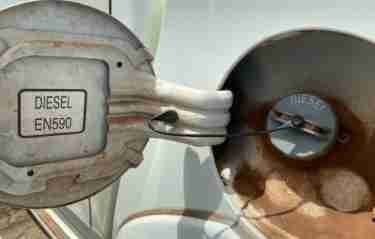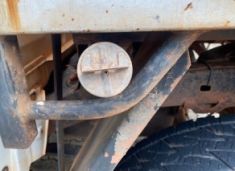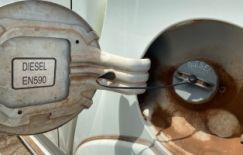

I put the wrong fuel in my Toyota
What should I do if I put petrol in my diesel Toyota fuel tank?
So after the initial shock dissipates and as the realisation hits home as to what I have just done, I think about my options from here on. The first question is, “have I actually done the wrong thing”? “Is my car actually a diesel” ? And if the answer is yes, then read on.
So then, now that you have confirmed your worst fears and yes your Toyota Prado definitely runs on diesel, so what should you do now? Firstly, you need to ensure that you are aware of your organisational workplace vehicle policy which may state, “do not drive the vehicle under any circumstances and call either your supervisor or fleet manager. So you will need to have their numbers handy. They can then advise you as to what your next course of action may be. This may also be dependant as to where you are, eg. In and around Darwin, in Katherine or out at Gapuwiyak

Easy to put the wrong fuel in a car when there is no Diesel or Petrol sticker!
The next question may be, “how may litres of petrol have I put into the tank”? If the answer is “I filled it up” then the car should definitely not be driven and it will need to have the entire fuel system drained, filled up with diesel, primed and then all will hopefully be good again. This may be able to be undertaken at your remote location albeit maybe not on the same day. Alternatively if you are in a local area transportation will need to be organised to a mechanic to have this sorted out. Again your supervisor of fleet person can advise you on this. It is of course much easier being close to suburbia if this happens than being in a remote setting. Your workplace may have an arrangement with the AANT to assist in the event of a breakdown or other mishap. 4X4 training will teach you what to look for in a diesel tank

That's better always look for the fuel sticker
Now, getting back to the previous question and if your answer is two or three litres of petrol before you realised it smelt wrong, or the nozzle was the little one, or the handle of the pump was all greasy and you stopped filling up at that point. Again, I would always suggest you call you supervisor and or fleet person to get confirmation, but it could well be that they take into account how much diesel was already in the tank or how much could I put into the tank to dilute the petrol you pumped into it. That is to say that 2-3 litres of petrol mixed with 50 to 65 litres of diesel may not cause you any problems at all. (So less than 5% of the total amount of diesel in the tank). I have done this myself and believe it or not, twice in the life of my Toyota troopie. The advantage I had was that the tanks are also much larger than many smaller 4x4’s so I had plenty of room to add diesel back in.
But I must stress, if you have any doubts, or it is not clear just how much petrol you put into the tank then please err on the side of caution and get the tank drained and replace it with clean diesel fuel.
So how then do we avoid this happening in the first place? Well you do a 4WD course with us and we can provide you with some tips as to how to determine which fuel type your car actually is. Or you can simply look in the manufactures manual, although not to many of us do that! Often there is a red ‘Diesel” sticker inside the fuel filler door, it may say “Diesel” on the filler cap and if you know the differences the filler is generally a larger size than that for a petrol car. Now older cars are going to be different again so we need to be able to determine via various means what your car actually runs on.
The author, has been driving various different makes and models of 4x4 vehicles across the top end from the Kimberley to Darwin and in Central Australia for 30 years. Meet the trainers